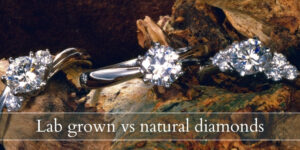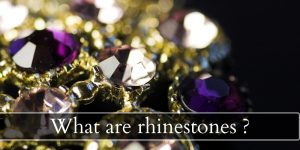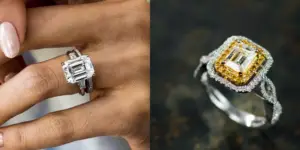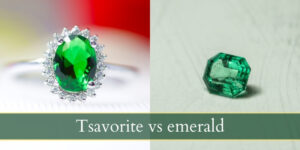Pearls are precious beauties and they’ve always been regarded as one of the most elegant gemstones in existence. Normally gemstones are minerals, but pearls are organic, as they’re made deep within an oyster, through a very interesting process. These are some of the most expensive gems you can find, especially if you’re buying natural pearls.
One thing that always stands out about pearls is their beautiful sheen and iridescence. While most of the time pearls are portrayed as white with a soft glow, this is not their only color. In truth pearls come in many different colors, each more fetching than the other. So why do pearls come in different colors ? Let’s find out.

Why are pearls different colors ?
The color of a pearl is dictated by several factors, only one of which is the oyster species and even then it’s not 100% certain. There is no real, reliable way of forecasting which oyster will produce which color pearl, as the colors are influenced by the number of layers of nacre, the faint pigments between those layers, and only sometimes the species of the oyster.
For example black pearls usually come from black-lipped oysters, and but they may also be found in other clams. If you were to open a black lipped oyster, you’d notice a black band along the outer edge on the inside of the oyster. This is also visible when the oyster opens to feed.
Black pearls usually come from the Pinctada margaritifera, white and gold from Pinctada maxima, and those are pretty much the only ones that can be guessed. All other pearl-producing bivalves have equal chances of producing any color pearl.
What color pearls are there ?
There are various colors of pearls, ranging form light to dark, from cool to warm, and some even range into golden colors. So you can find dark green pearls with a blue-purple sheen, white pearls with a pink-gold sheen, grey pearls with a blue or purple sheen, and anything you can imagine.
Most pearls on the market are cultured pearls, meaning they come from oysters that have been bred and raised to produce a pearl, every one of them. Each oyster may produce a different color, but each species tends to have a predominant color it produces. Even so, the color range can vary drastically from oyster to oyster.
Read also: Moonstone VS Pearl
Can you change a pearl’s color ?
Pearls may change colors if subjected to specific treatments. For example freshwater pearls subjected to gamma rays will darken their nacre layers, leading to greater shine and in some cases a better looking pearl, especially if trying to achieve a black pearl.
Saltwater pearls subjected to the same treatment will darken their center instead, leading to a deeper overall color of the pearl, but will not affect the luster.
And of course, pearls may be dyed, or in the case of farmed pearls the foreign object may be of a specific color, so the layers of nacre will reflect this color when the pearl is finished.
What is mother of pearl ?
Mother of pearl is also called nacre, and it is a composite material, made up of layers of aragonite on top of flexible organic material resembling chitin. These layers repeat, and under a microscope look remarkably like brickwork. Nacre is usually found on the inside of the shell, as a protective layer.
Once an irritant enters the mollusk, such as a small parasite, it is immediately surrounded by an organic sac to prevent irritation. Next is a layer of nacre, and the oyster will continue to deposit layers of nacre to ensure the intruding object won’t irritate it. The layers are secreted by the oyster indefinitely, or until the oyster dies.
The more layers there are on a pearl, the thicker it becomes and the better the color and luster. A pearl with a fine layer will have an unclear color and not much iridescence.
What is the rarest color of pearls ?
The rarest color of pearls is blue, and this applies to natural, saltwater pearls. You can easily find farmed pearls that were dyed blue, or have a blue center bead, but these are always cheaper. A natural, wild blue pearl is extremely rare and valuable.
The next rarest color is white pearl, because most pearls come in various shades but few comes in a simple white color with an elegant iridescence.
Black pearls used to be very rare and thus incredibly expensive, because pearls were only found in the wild and black pearls were very rare. Nowadays black pearls are only from oyster farms, and the offer can easily meet the demand, thus their price has dropped.
In truth, aside from the blue pearls, color does not affect a pearl’s price that much. There is more emphasis on how uniform the color is, lack of scratches, how strong the iridescence is, and how round it is.
Why do pearls turn yellow ?
Pearls turn yellow because they may dry out if kept poorly. The layers of nacre can dry out completely, and become brittle. They take on a yellow hue because of this, and the pearl simply breaks apart in small flakes of dried nacre.
You should wear your pearls semi-regularly to keep them shiny, vibrant, and well aired. The natural oils and moisture on your skin will keep pearls safe and beautiful for decades, as long as you don’t forget them in a drawer for a year.
Restoring your pearl’s color is not easy, and is actually close to impossible if you’ve noticed they’re dry and flaky. If they are chipping and flaking, they will do so especially around the drill holes or any place that they have been breached.
A yellowing pearl is not a sign the pearls are fake. It’s a sign they’re real, organic material and as such need extra care to maintain their color and luster.
Tips on how to care for your pearls
While saving yellowing pearls is difficult, there are way to avoid it completely. The kay point to remember is that pearls need exposure to air and slight moisture, so the more you wear your pearls, the better they will survive outside of the oyster. That being said, there are some rules or guidelines you need to be aware of if you want strong, beautiful pearls that last for decades.
Last on, first off
When choosing which jewelry to wear, remember that pearls need to be the last thing you put on and the first thing you take off. These are soft, brittle gemstones and as such they need some extra care from you. Pearls score a 2.5-4 on the Mohs scale of hardness, which means they are very, very easy to scratch, break, or chip.
Pearls are best worn as earrings or necklaces, rather than bracelets or rings. This way you minimize the amount of impact from your movements.
Keep pearls separate from other jewelry
Keep your pearls away from other jewelry, mainly because they may easily scratch. Don’t throw your pearl earrings into a pile, lay them gently on a stand of their own, and do the same for your necklace. In truth, you should treat all your precious jewelry with care, and have a jewelry bow to keep everything safe and separated.
Pearls are best kept in a separate cloth pouch and worn often, or left somewhere there air circulates a little. If you hide them in a jewelry box for several months you may find they’ve started to yellow a little.
Have them looked at every couple of years
Take your pearls to a jeweler for a checkup every now and then. They will be able to tell you the state the pearls are in, how well you’ve kept them, as well as any possible treatment you may apply to them to better maintain them, or remove the yellow tone.
Keep pearls away from chemicals and acids
Pearls are very fragile, and they’re also sensitive to anything that is acidic or a harsh chemical, or drying. So keep pearls away from vinegar, lemon juice, nail polish remover, perfume, body lotions, hand cream, and your own sweat.
Really, pearls are a bit bothersome to care for but they’re incredibly beautiful and they need your attention more often then you think. A well-worn pearl necklace will always look better than one worn twice a year.

I’m the main author for jewelrymaterialguide.com. I started this site after we did tons of research before our wedding and noticed that there is information about rings, jewelry, and so on that is really hard to find on the internet.






